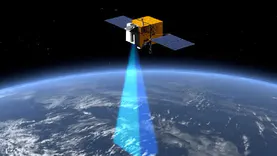The Hong Kong government is promoting the development of low altitude economy, and the first batch of "regulatory sandbox" pilot projects has received 72 applications, of which 38 have been approved. On August 20th, Democratic Alliance for the Betterment and Progress of Hong Kong Legislative Council member Claudia Mo announced that 22 approved projects have been implemented; Among the unapproved projects, 8 are manned flights. With the relevant regulations coming into effect in mid July, the Hong Kong government is contacting them one by one to study whether they can be test flown, hoping to implement at least one to two within this year.
The Hong Kong government plans to launch the second phase of the "Regulatory Sandbox" pilot project in the first half of next year. Ge Peifan believes that the second phase of the "Sandbox" is sufficient and commercial operations can be carried out directly thereafter.
The Greater Bay Area Low Altitude Economy Alliance, chaired by Ge Peifan, has put forward 12 areas and 45 suggestions for the development of low altitude economy today, including the comprehensive formulation of Hong Kong's low altitude economy development strategy, the establishment of a "Low Altitude Management Bureau", the establishment of a "Low Altitude Urban Governance Shared Platform" within the government, and the construction of the Hong Kong Low Altitude Traffic Management Platform (UTM).
Ge Peifan pointed out that Deputy Financial Secretary Wong Wai lun once stated that "we need to promote Hong Kong to become a global leader in low altitude economy", but the government currently does not have a practical document, and believes that it is most urgent to do top-level design as soon as possible to let the industry understand the comprehensive development strategy of the Hong Kong government.
In terms of cross-border freight routes and customs clearance arrangements, Deng Shuming, vice president of the Alliance and guest professor of the School of Computing and Data Science of HKU, suggested that customs and logistics facilities related to Tuen Mun Inland River Terminal, which can be connected to the airport within 15 minutes, be transformed into a low altitude economic logistics transportation center, and let the high altitude cargo of Hong Kong International Airport connect with the low altitude logistics chain of the Great Bay Area under construction, transfer the high value-added and urgent goods in air cargo to medium-sized UAVs and cooperate with cold chain transportation, so as to reach the market on the same day, expand market opportunities such as catering and high-end food materials. For example, she said that fresh Japanese Yusheng arrived at the Hong Kong airport, used UAVs to deliver goods to all parts of the Great Bay Area, and could be served that night.
In terms of regulations and supervision, the alliance suggests requiring all drones to use the government's spatial data sharing platform and connect to the government's "low altitude traffic management platform", and reserving a legislative timetable and start-up funds for the "platform" in 2026/27; It is also suggested to establish a low altitude economic research fund, promote the development of low altitude economic insurance services, and cooperate with relevant units in mainland China to formulate low altitude economic standards.
The alliance also suggests creating a new tourism model of "low altitude+cultural tourism", which can also create low altitude tourism routes such as Kai Tak Cruise Terminal low altitude Victoria Harbour Tour, Geopark, Qiandao Lake, etc.








